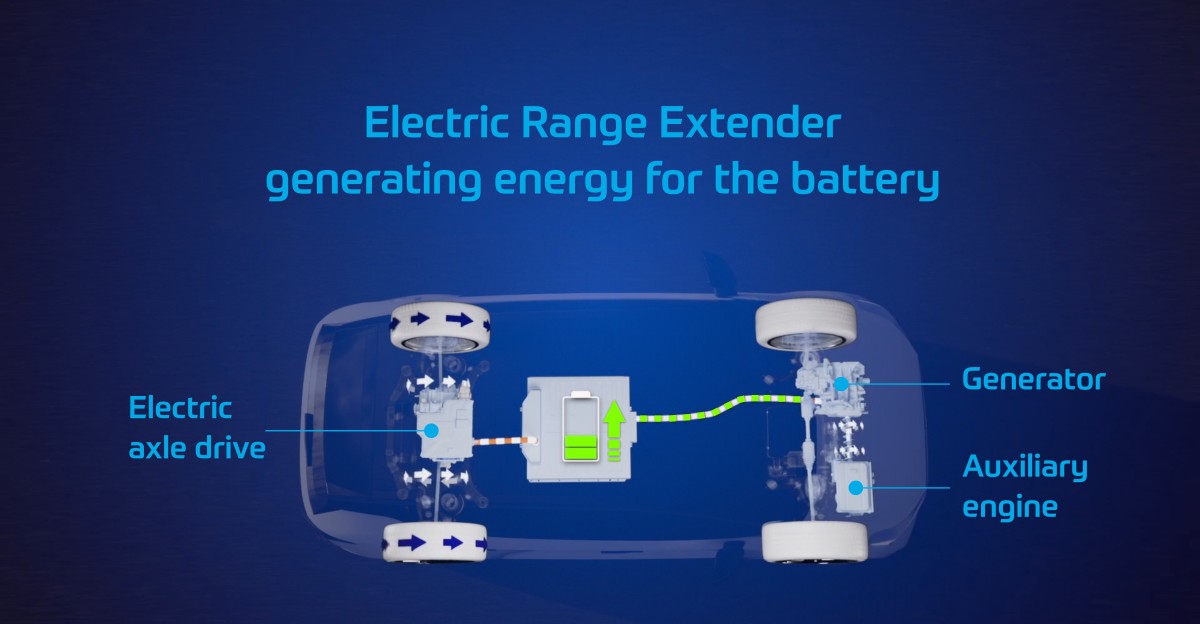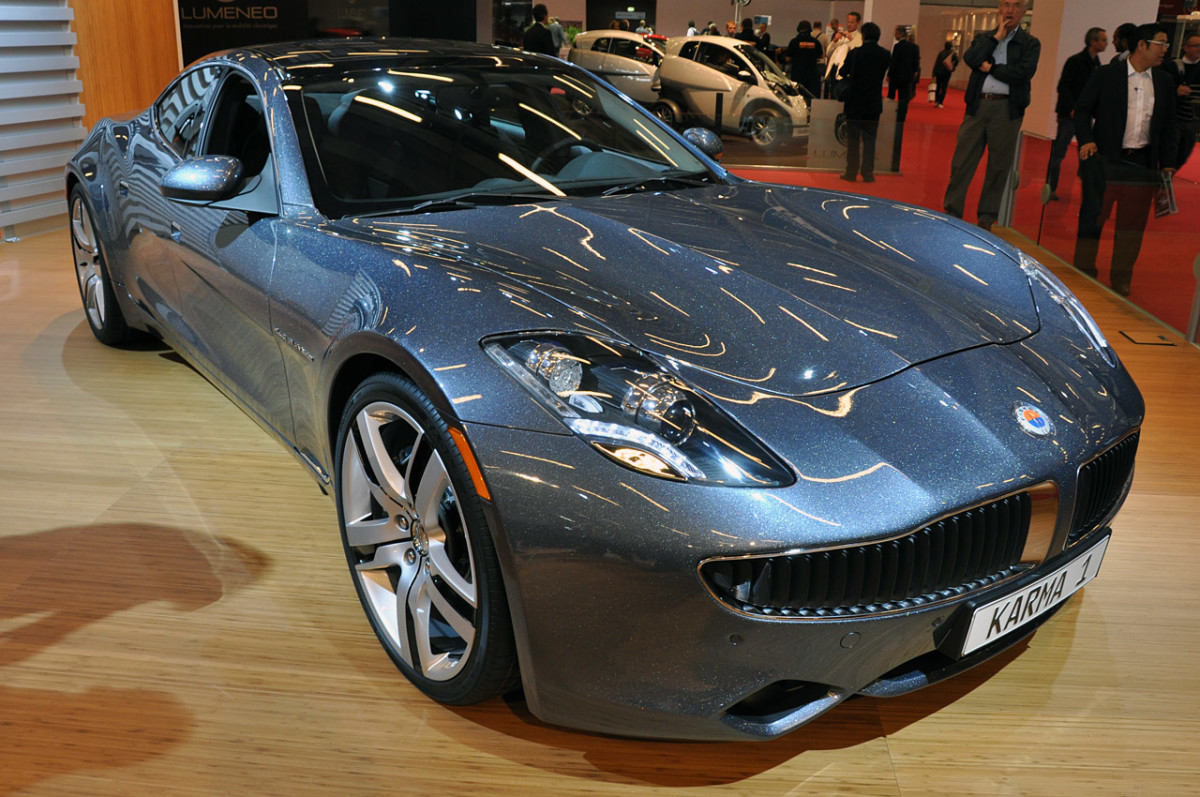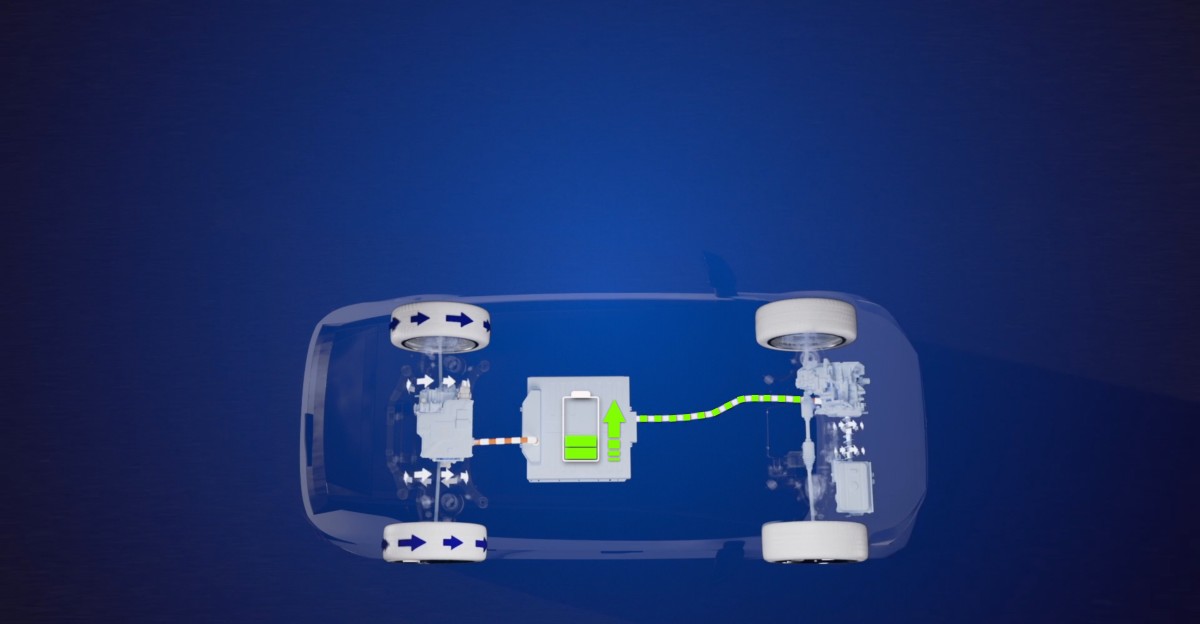It’s not all about EVs
These days, electrification is becoming the name of the game in the auto industry, as it seems that almost every major automaker from BMW, Honda, Toyota and even Porsche and Lamborghini is dipping its toes into producing EVs, or cars that create lower emissions through the use of batteries and electric motors attached to more efficient engines.
While the popularization and continued introduction of EVs, hybrids, and other electrified powertrains may indicate that the days of gasoline-engined cars are somewhat numbered, some in the automotive industry want to make the transition to zero-emission motoring a more gradual process for both the industry and eco-conscious drivers.

ZF
Auto supplier ZF unveils an “out of the box” extended-range solution
One of the leading auto suppliers, the German company ZF, recently revealed its new electric range-extender system, which it calls the electric Range Extender (eRE) and the electric Range Extender plus (eRE+).
Extended-range electric vehicles, or EREVs, are unique compared to other gas and electric propulsion solutions. In practice, extended-range EVs act like traditional electric vehicles powered by batteries, like a Nissan Leaf or a Tesla. At their core, these cars are mainly driven by an electric motor powered by a lithium-ion battery.
These cars get the name “range extender,” as an onboard generator, usually a gas-powered engine, is mounted to recharge the battery when it gets depleted. Although these engines may lie under the hood, they aren’t mechanically connected to the wheels.

View the 3 images of this gallery on the
original article
Extended-range vehicles aren’t new technology, as they have been used in cars like the Chevrolet Volt and the Fisker Karma and offered as an option in the BMW i3. In recent times, Stellantis has been pushing this tech in a new creation that was shown off during a commercial that aired during the past Super Bowl: the Ram 1500 Ramcharger.
Although a big automaker like Stellantis is pushing this tech onto the masses, ZF still sees a gap in a market full of curious electric car buyers let down by the lower range numbers compared to their gas and diesel-powered counterparts. “Although the all-electric range of passenger cars is around 500 km [about 310 miles] on average, range anxiety still influences a wide range of buyers when choosing their next vehicle,” ZF Electrified Powertrain Technology R&D SVP Dr. Otmar Scharrer said in a statement.
ZF’s new range extenders come in two variations: eRE and eRE+. The former, called eRE, connects an electric motor to an integrated converter with a planetary gearset. Meanwhile, the eRE+ adds an “intelligent clutch” and a differential, which allows it to be used as a generator or a secondary drive unit.
ZF Range Extender ZF
View the 2 images of this gallery on the
original article
The German auto supplier giant argues that EREVs are a better solution than traditional plug-in hybrids from a practical point of view. They require much shorter development times, are cheaper to produce, and are supported by much tighter supply chains. Additionally, because these engines are not physically attached to the wheels in any mechanical way, they do not burn as much fuel as traditional cars.
ZF also states that it was inspired by the Chinese auto market, where domestically developed EREVs are taking off faster than battery-poweres, fully-electric vehicles. They denote that with this solution, this emerging technology can be a gamechanger with new manufacturers getting into the EREV market, as well as startups who are unfamiliar with traditional combustion engines.
“The new interest and the increased demand for range extenders shows that the potential of this technology is far from exhausted—in particular for model platforms that are already designed for battery-electric drivelines,” Scharrer said. “Behind our solutions is the system and platform concept. This means that we are optimally equipped to be able to respond to all customer and market requirements with shorter development cycles.”
ZF
Final thoughts
American automakers have been showing great enthusiasm for extended-range electric vehicle technology. During an earnings call in February, Ford CEO Jim Farley said that Ford will develop “flexible body-on-frame and unit body platforms” for EREV technology. As someone who has been visiting China regularly, he noted that EREV customers that he and other Ford execs encountered in China “thought of these vehicles as EVs.”
“They do not think of them as hybrids or plug-ins,” Farley said. “These are electric vehicles. 95% of [their miles are] electric, and they plug them in every night and the satisfaction is even higher because they’re more affordable.”
As a major supplier to big-name partners that include automakers like Aston Martin, GM, Stellantis, Ford and BMW, I think ZF has the potential to make their plug-and-play EREV drive units as much a hot commodity as their gearboxes are.